
If you are following the lead-up to Alien: Earth’s August 12 debut, you know a few details about the upcoming series: Set while the USCSS Nostromo is still on its deep space mission, another Weyland-Yutani vessel, the research ship USCSS Maginot, is hurtling toward Earth with seemingly no one at its helm. Subsequent trailers and teasers also make it clear the ship will crash somewhere on the home world of humanity.
In April of 2024, Rotten Tomatoes and other journalists had the opportunity to tour the “crash site” — that is, the set of the Maginot and a few other standing locations at a studio facility in Bangkok, Thailand. Beyond the program’s key first — bringing Dan O’Bannon, Ron Shussett, and H.R. Giger’s alien to the streaming screen — producing the series in Thailand could be a boon for the country.
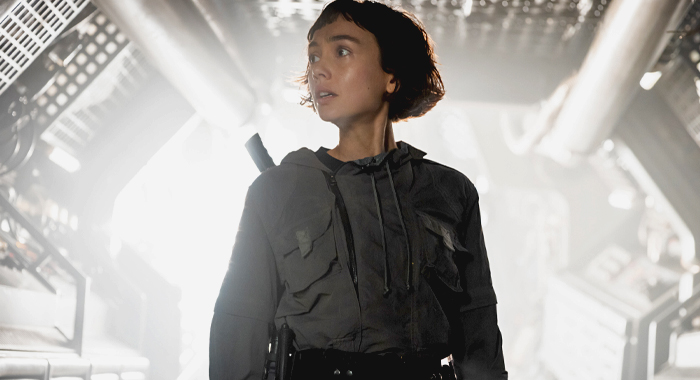
Indeed, the series reflects that with the fictional Maginot crash site in Southeast Asia. Of course, the vision of the region in 2120 is fairly different from 2024. In the future of Alien: Earth, the world is divided up by five leading multinational conglomerates. One is Weyland-Yutani, the Company making life tough for just about everyone since 1979’s Alien debuted. Fun fact: The Company’s name is never uttered in the film, but its name can be spied on beer cans in the infamous dinner scene. Alien: Earth, meanwhile, concerns itself with Prodigy Corp, a company with interests closer to home. As series creator and executive producer Noah Hawley explained, “it was kind of baked into it.”
Indeed, the Company has been a constant antagonist (Alien Resurrection aside), but the corporate structure of the Earth in the series reflects a modern feeling about such giant companies and the occasional cult of personality in charge of them. “In order to make it feel contemporary, we needed to address that idea that this whole thing is the whim of this prodigy and that what you get in a corporation is a diffused decision system where nobody actually decides who is at fault, and therefore it doesn’t have to be a human decision.” Equating the current situation in businesses worldwide to the episode of The Twilight Zone where a boy gains the power over reality, the companies of Alien: Earth represent that devilish child with control of all the toys.
“There’s something so awful about having to please someone who doesn’t have a rational view of the world or is subject to [their own] whims,” Hawley added.
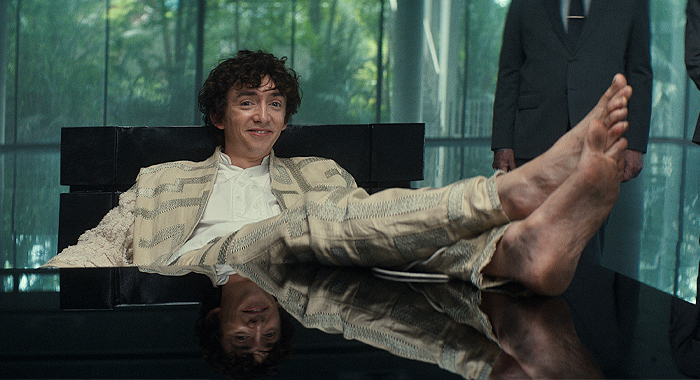
In part, that aspect of the corporate plutocracy is represented by Prodigy Corp and its enigmatic leader, Boy Kavalier. He is developing a revolutionary technology that underscores the Alien series’ overall tension between the bio-mechanical Xenomorphs, conventional humans, people with cybernetic components, and full androids — er, “artificial people.” As actor Samuel Blenkin, who plays Boy, explained, the character is known for being “twenty steps” ahead and absolutely sets the tone for Prodigy.
“He’s very much at the top of the pyramid,” he said, adding that Boy is “much more of an artist or a creative rather than a scientist.”
“He also has an ability to reframe and reevaluate problems and come up with solutions that are basically looking at it from way outside the box. And so yeah, sometimes he throws a couple of curve balls in there … He’s never been told that he’s wrong. I don’t think he’s ever had a moment where somebody has said that you are wrong, and it’s had any impact.”
That certainty leads to his latest innovation as the series beings: synthetic humanoids with human consciousnesses known as hybrids. It seems Boy is capable of making the Transhuman dream come true. Which, according to Hawley, highlights an underlying tension of the Alien series as a whole: “It’s about humanity trapped between the primordial parasitic past and the AI future. And they’re both trying to kill us.”
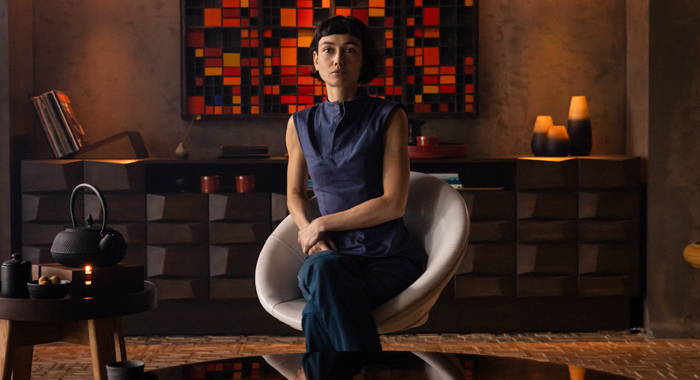
In the moment the series begins, the five companies — which also includes Lynch, Dynamic, and Threshold — are “trying to figure out how humanity transcends to the next level artificial intelligence. Is it enhancing the human body mechanically, or is it this Transhuman idea?” Likening it for the forces vying to control electricity in the early 20th century, the backdrop of Earth before the Maginot crashes is one in which “everyone’s fighting to control [that transcendence].”
“That felt like a really interesting conversation to have [and] then bring the monster into it,” Hawley added. “Because the show and a lot of science fiction is really about the idea of ‘does humanity deserve to survive?’”
In a laboratory with a giant overhead projection screen that will evoke certain memories of Hawley’s X-Men series, Legion, Boy’s hybrids will be born. The first of them, Wendy, as played by Sydney Chandler, is very much in the Alien protagonist mold. She’s a woman with shortish hair and a take-charge attitude. Nevertheless, Chandler revealed to us the key quirk with Wendy: mentally, she is still a child. In the fiction of the program, younger consciousnesses better survive the transfer process into hybrids. For Chandler, bringing that to screen meant focusing not so much on being a kid, but instead, “what attributes children have that we may lose as adults.”
“Being extremely earnest, extremely honest, a sponge to the world, eyes wide open, taking everything in,” she said. “Kids don’t tend to put on masks like we adults do.”

That childish quality means she is also concerned with Hermit, a Colonial Marine who is sent to investigate the Maginot. “His world gets turned upside down” actor Alex Lawther said of his character. Hermit shares some past with Wendy, but it is unclear if they will know that before he reaches the downed ship. “There are some unresolved questions between them and there’s a ‘coming to terms’ from Hermit’s point of view as to who this person is.”
The state of the ship when it reaches Earth is what you might expect from a crashed Weyland-Yutani vessel. Some of its interiors will be immediately recognizable as a sister-ship to the Nostromo. The galley, for example, is a 1:1 recreation of the same deck in Alien. The ladders connecting the decks are also present, as is the vaguely Egyptian detailing designers like Ron Cobb and Syd Mead first gave to the Nostromo in the 1970s. Jason Knox-Johnston, the production designer of the season’s middle episodes, said the set is “a faithful recreation of what they did in ‘79.” The corridors, panels, and main rooms all reflect the design aesthetic that is now emblematic of Weyland-Yutani. Even the hallway doors are rigged with a practical counterweight system to give the hatches the same heft as seen in the original Alien. “It’s the speed at which they open,” he explained.
The Company aesthetic, he added, also comes down to a practicality of “form follows function.” Like the US Navy, the Company’s ships would tend to feel similar in most respects thanks to producing practical elements on a mass scale. “And it’s just great that it looks the same,” he quipped.
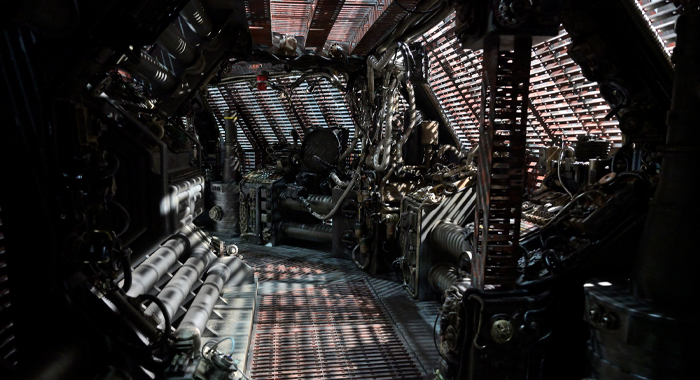
Even the wide cargo bay, with its hanging chains and huge crates, will evoke an unsettling memory of Harry Dean Stanton’s final moments in the original film. In fact, we half expected a Xeno (the colloquial term for the titular alien) to drop from the rafters. Instead, the creature remained contained in its own department elsewhere on the studio lot.
One key difference between the two ships, though, is the hypersleep tube chamber. Where the Nostromo had one berth for seven sleep pods, the Maginot contains three berths for a much larger crew. When we visited, the set was already dressed for post-crash scenes and, as Knox-Stanton teased, “people have died in gruesome ways.”
In contrast to the classic Alien design of the Maginot, Prodigy’s lab in South East Asia reflects certain practicalities. For one: mold is a constant problem in the very humid climate, so the hallways of the facility are sprayed down constantly by Prodigy employees in full hazmat suits to mitigate the spread. Additionally, Boy eschews the design aesthetics of Weyland-Yutani and its subcontractors, so the hallways of the lab are more streamlined and, in a real-world sense, modern. Nevertheless, they maintain a certain Alien feel – although 16:9 HD panels at Prodigy replace Weyland-Yutani’s fondness for 4:3 CRT displays.
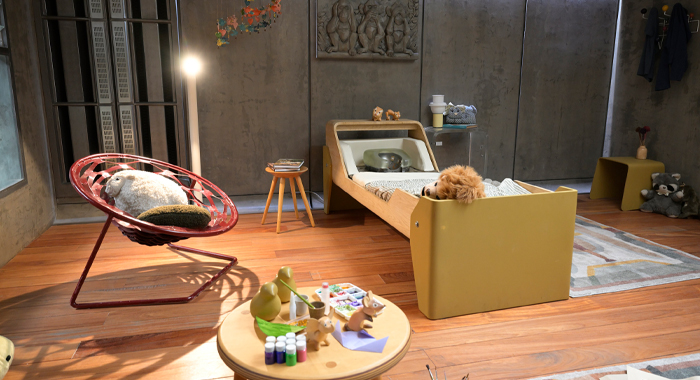
Wendy’s quarters at the lab are far more homey with stuffed animals adorning her bed and other nick-knacks hearkening back to her life before becoming Wendy. “[The hybrids] still have a lot of their childhood things. They’re still coping with their adult selves,” Knox–Johnston explained. Her synthetic half, though, is represented by a strange toilet-seat-shaped pillow used to recharge her power banks while her human consciousness sleeps.
Back on the Maginot, a xeno is definitely aboard, but it is not alone. As revealed in the trailer, two alien life forms known as The Orchid and the Eye Midge also have the potential to menace humanity. “The Orchid can inflate or deflate… and they can become a bit larger,” creature supervisor Sarawut “Tor” Sakthamcharoen said via an interpreter. It remains to be seen, though, just how much of a threat they will prove once a full-grown xeno makes its presence known.
Naturally enough, much of the xeno creature effects are realized practically with mechanical eggs, a man in an alien suit, and facehugger puppets. The Orchid and Eye Midge are also realized with a mixture of practical effects and computer-generated graphics. We can attest that the practical effects are gooey, terrifying, and sort of beautiful in their own way. That said, we don’t quite admire the creatures the way Ash (Ian Holm) admires the xeno in Alien.
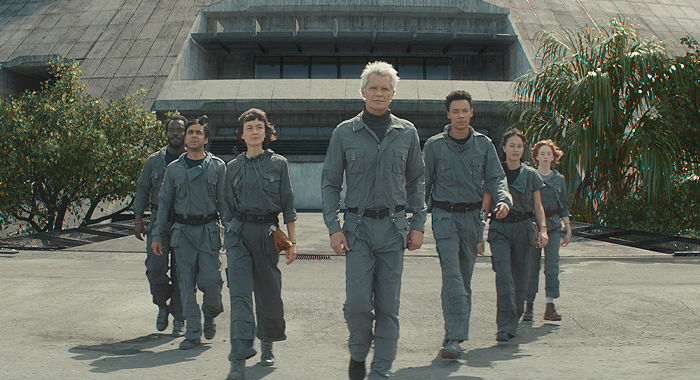
And once the Maginot makes its violent and public reentry to Earth, Wendy and some of the other Hybrids — including Tootles (Kit Young), Curly (Erana James), Nibs (Lily Newmark), and Smee (Jonathan Ajayi) — join up with Hermit’s Marines to investigate the Maginot and face the potential of a xenomorph onslaught.
Oh, and if all the Hybrid names seem familiar, the Lost Boys connection is intentional. “It just felt like that was there to explore,” Hawley said. “And does it help that it literally marries the Disney brand with the FX brand? Surprisingly, it does help.” Although, he was quick to note his plan to use some Lost Boys iconography predates Disney acquiring Alien and the rest of the 20th Century Studios assets by several years.
“For us hybrids, there’s a lot of conversation [about] these lives before we’ve been given these lives now,” James said. Her character, the indigenous New Zealander called Curly, is “so grateful for the opportunity that she’s been given and she’s very eager to prove herself and show just how grateful she really is.”
Ajayi also offered a few insights into his hybrid, Smee, “[He] is almost identical to what I was like when I was 10 … He has this kind of very robust sense of positivity. He loves his people. His relationships are priority in life as are mine and my friendships.”
He also revealed one more quirk about Smee: “He’s in a unique position in the show where he has exactly what he wants.”
Newmark’s Nibs, meanwhile, also has something she really wants by becoming a hybrid, but the actor felt the key enhancement is the fully grown body her character now inhabits. “To be treated as a superhuman adult is a kind of unprecedented privilege for her,” she explained. Nevertheless, Nibs isn’t exactly happy in her new form, but is still excited “to explore what that body is capable of and to be treated as special.”

For Tootles, who was one of the older children before the transition, it’s more about accepting his current situation. “A child, as he’s growing up — more than anyone — wants to really seize a form of identity and discover who they are and be allowed to grow up,” Young said. Unfortunately, the hybrids’ new names, faces, and forms are not necessarily their own to choose. “If someone decides that for you, any kid is going to kick back,” he teased. At the same time, Tootles has a desire to be treated “seriously as an adult,” especially by Kirsh, Timothy Olyphant’s character.
“Timothy’s such an American actor presence,” Hawley said of the actor, who portrays a genuine artificial person like Ash or Bishop (Lance Henriksen), but not necessarily in the same mold. According to Hawley, his presence plays against the established persona for synthetics from Alien and Aliens.
The Prodigy team is rounded out by Essie Davis as Dame Sylvia and David Rysdahl as her husband, Arthur. The pair are the technological geniuses behind Boy’s hybrid program, which leads to an interesting dynamic between them.
“At the start of the show, they are two idealistic scientists living their dream… They’re really working together to fulfill the dream,” Rhysdahl explained. “One’s a technician, one’s more of a theorist, the Dame, she’s also in charge… Our work has become our family.”

“I’m definitely the mother figure,” Davis said. “I help [the hybrids] go from play into grownup while still keeping open that creativity and trying to hold onto goodness and generosity … she’s very much investing these children with [the sense] they are her children.” That investment will lead to some tension between Dame and Arthur, who may be using the situation to patch over a problem in their marriage.
“It’s just fun to have a relationship drama within this world,” Rysdahl added.
Reflecting the global feel of the show, some actors will be using their own accents while others take on more American-sounding voices per the needs of the story. But as Young joked, “Fantasy works really well with European accents, and sci-fi works really well with American accents.” He will be using his own accent as Tootles, though.
Tensions like the Sylvias’ marital issues and the worldwide impact of the five companies is what Alien: Earth wants to build from the crash of the Maginot to whatever the aliens do and wherever they go. From our visit to the set, it seems the cast and crew are hitting the mark for that specific Alien tension. Which, of course, is just what Hawley wants it to be. As he told us, it was important to “figure out what the original made me feel and why, and then try to make you feel similar things while telling you a completely different story.”
Alien: Earth: Season 1 debuts with two episodes on August 12.
